Garlic Co-op – Next Work Party – April 14, at 10:30am.
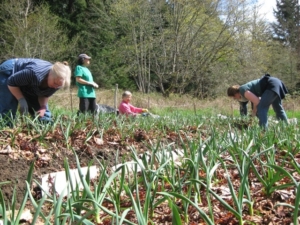 Our next work party is next Sunday, April 14, at 10:30am.
Our next work party is next Sunday, April 14, at 10:30am.
We’ll be spraying compost tea on our beds and making squash mounds. We’ll also be weeding, and if we have time we’ll be laying more cardboard and burlap and covering compost piles with corn tarps.
This month I have a little homework assignment —a very simple compost tea ‘recipe’ to try. It will only take a few minutes. This 4-minute David Suzuki video shows you how to do it (you can start watching at 1:09). The tea takes 5-7 days to brew and only lasts 1 week so you’ll want to start it sometime this week to have it ready in time for the work party. All you need is cheesecloth, a bucket, and some non-manure compost. I suggest you double the recipe – one for your garden and one for the garlic co-op!
Also, some good news about burlap: JJ Bean in Vancouver will give a dozen burlap sacks free to anyone who comes to their corporate office at 1904 Powell St. (enter from Victoria Dr.), 8:00-4:00, Mon-Fri. If you find yourself in Vancouver and able to pick some up, please do! Best to call ahead to make sure they have some on hand – 604.254.0161. Other coffee companies may well have some to spare too.
TO BRING:
- a garden sprayer, if you have one, to spray the tea, or a watering can with a shower end
- Any organic material you can contribute: seaweed, compost, nettle stalks, leaves, ash, lime, manures, grass clippings, newspaper, etc. and especially cardboard
- your compost tea!
- Pruners, rakes
[Please remember that cardboard should be large sheets with minimal ink and tape, and no staples. Please also note that ash should be clean – no processed wood products that contain formaldehyde and other toxic glues and preservatives. Thank you!]
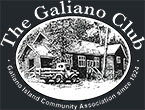
 COME JOIN US AT 9:30 MARCH 8TH AT THE END OF GEORGIA VIEW RD. (ENTRANCE TO THE COMMUNITY FOREST) TO HEAR WHAT HERB HAMMOND, KEITH ERICKSON AND OTHER LOCALS HAVE RECOMMENDED FOR IMPROVING THE FOREST AND REMOVING WOOD. REFRESHMENTS WILL BE AVAILABLE.
COME JOIN US AT 9:30 MARCH 8TH AT THE END OF GEORGIA VIEW RD. (ENTRANCE TO THE COMMUNITY FOREST) TO HEAR WHAT HERB HAMMOND, KEITH ERICKSON AND OTHER LOCALS HAVE RECOMMENDED FOR IMPROVING THE FOREST AND REMOVING WOOD. REFRESHMENTS WILL BE AVAILABLE. Class on Sunday, April 7th from 11am till 5pm
Class on Sunday, April 7th from 11am till 5pm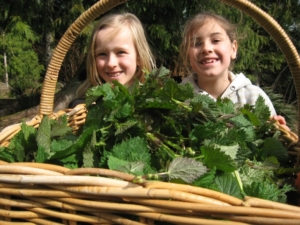 This years Nettlefest Potluck will be happening on March 30th at 5:30pm at the South Community Hall. This year we have a special request – please wear green to the dinner!!
This years Nettlefest Potluck will be happening on March 30th at 5:30pm at the South Community Hall. This year we have a special request – please wear green to the dinner!!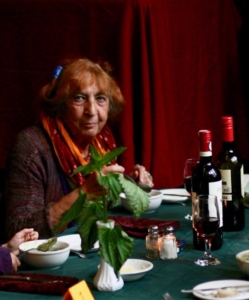 Come join Hugette, from La Berengerie, and learn how to make Couscous Royale, atraditional and richly-spiced North-African dish that is bursting with flavours.
Come join Hugette, from La Berengerie, and learn how to make Couscous Royale, atraditional and richly-spiced North-African dish that is bursting with flavours. Everyone is welcome to jump-start the Gardening year in the community greenhouse.
Everyone is welcome to jump-start the Gardening year in the community greenhouse.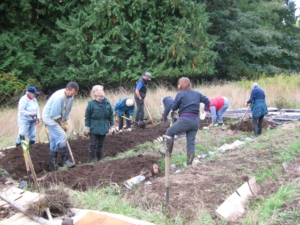 We’ll be sowing the fallow bed in rye and phacelia as cover crops. We’ll also be amending the soil, so please bring any organic material you can contribute: seaweed, compost, nettle stalks, leaves, compost tea, ash, lime, manures, grass clippings, cardboard, newspaper, etc. are all welcome!
We’ll be sowing the fallow bed in rye and phacelia as cover crops. We’ll also be amending the soil, so please bring any organic material you can contribute: seaweed, compost, nettle stalks, leaves, compost tea, ash, lime, manures, grass clippings, cardboard, newspaper, etc. are all welcome!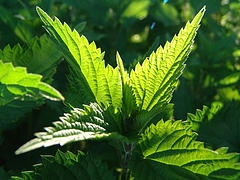 The 6th Annual Galiano Nettlefest Community Potluck will take place on March 30th.
The 6th Annual Galiano Nettlefest Community Potluck will take place on March 30th.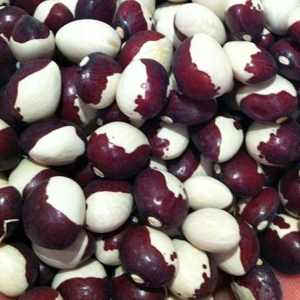 This year’s crop of seed catalogues has just arrived in our mailboxes packed with inspiration and ideas, and getting gardeners (and even non-gardeners like myself) excited about the upcoming growing season. It’s February, but it’s time to start thinking about, and planning the garden for the year. And when you are planning, don’t forget to order your seeds for next winter’s crops. We are lucky to live in a place where winter gardens are entirely possible, and some suppliers will run out of seed by mid summer.
This year’s crop of seed catalogues has just arrived in our mailboxes packed with inspiration and ideas, and getting gardeners (and even non-gardeners like myself) excited about the upcoming growing season. It’s February, but it’s time to start thinking about, and planning the garden for the year. And when you are planning, don’t forget to order your seeds for next winter’s crops. We are lucky to live in a place where winter gardens are entirely possible, and some suppliers will run out of seed by mid summer.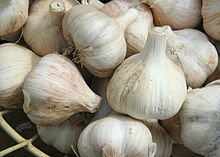 Happy new year, everyone! My name is Emma Davis, and as one of the Food Program’s new coordinators, I’ll be organizing the Garlic Co-op from now on. I’ll do my best to follow in Janice’s very big shoes.
Happy new year, everyone! My name is Emma Davis, and as one of the Food Program’s new coordinators, I’ll be organizing the Garlic Co-op from now on. I’ll do my best to follow in Janice’s very big shoes.